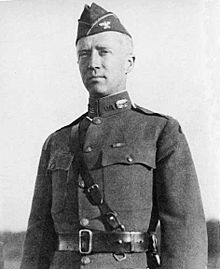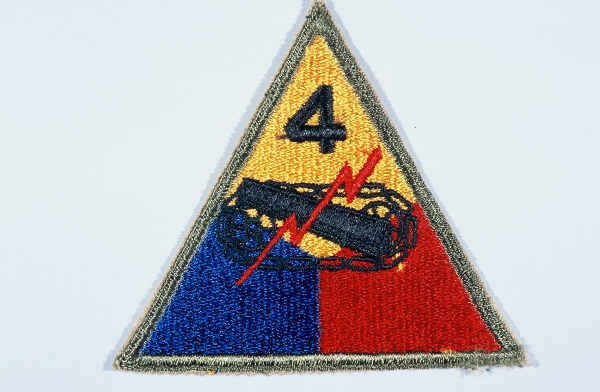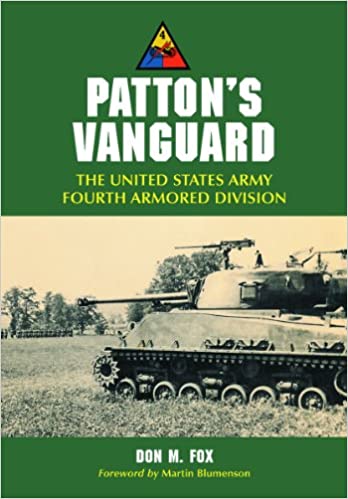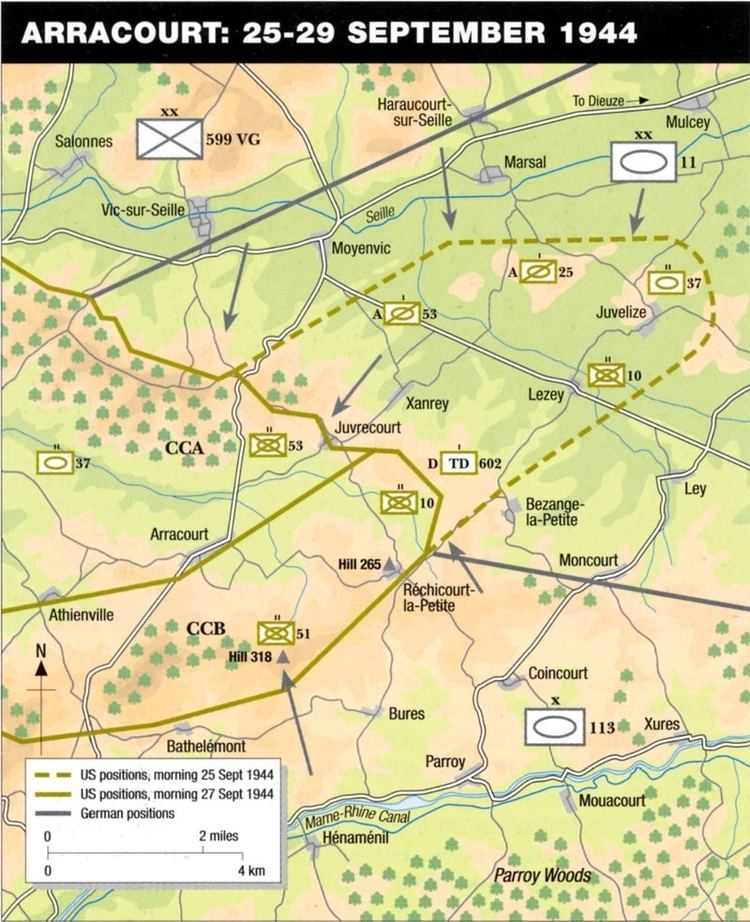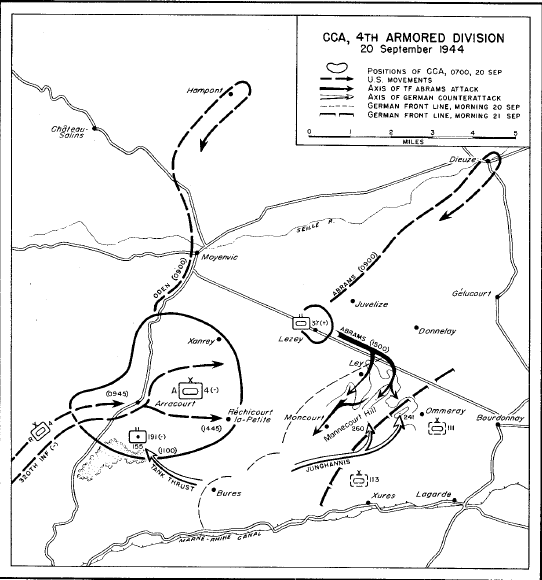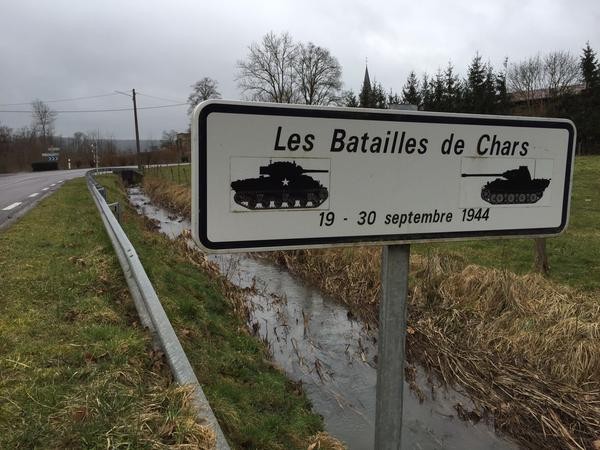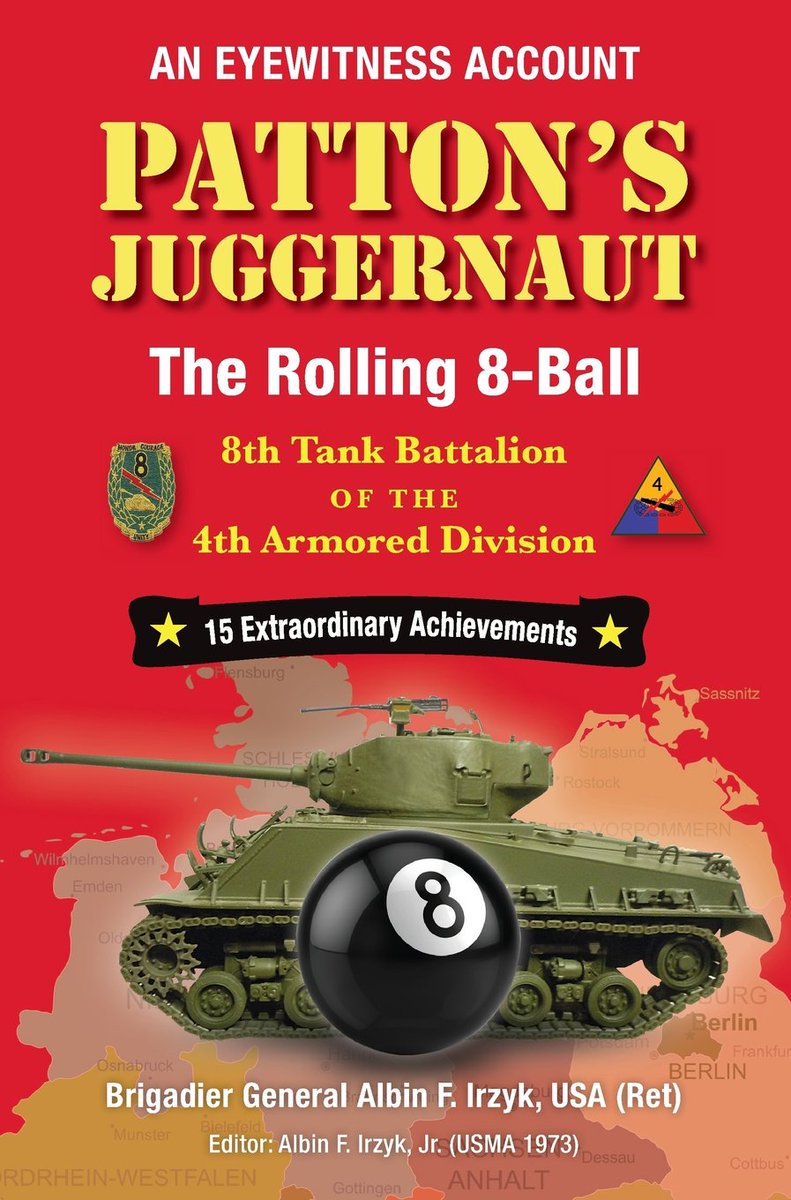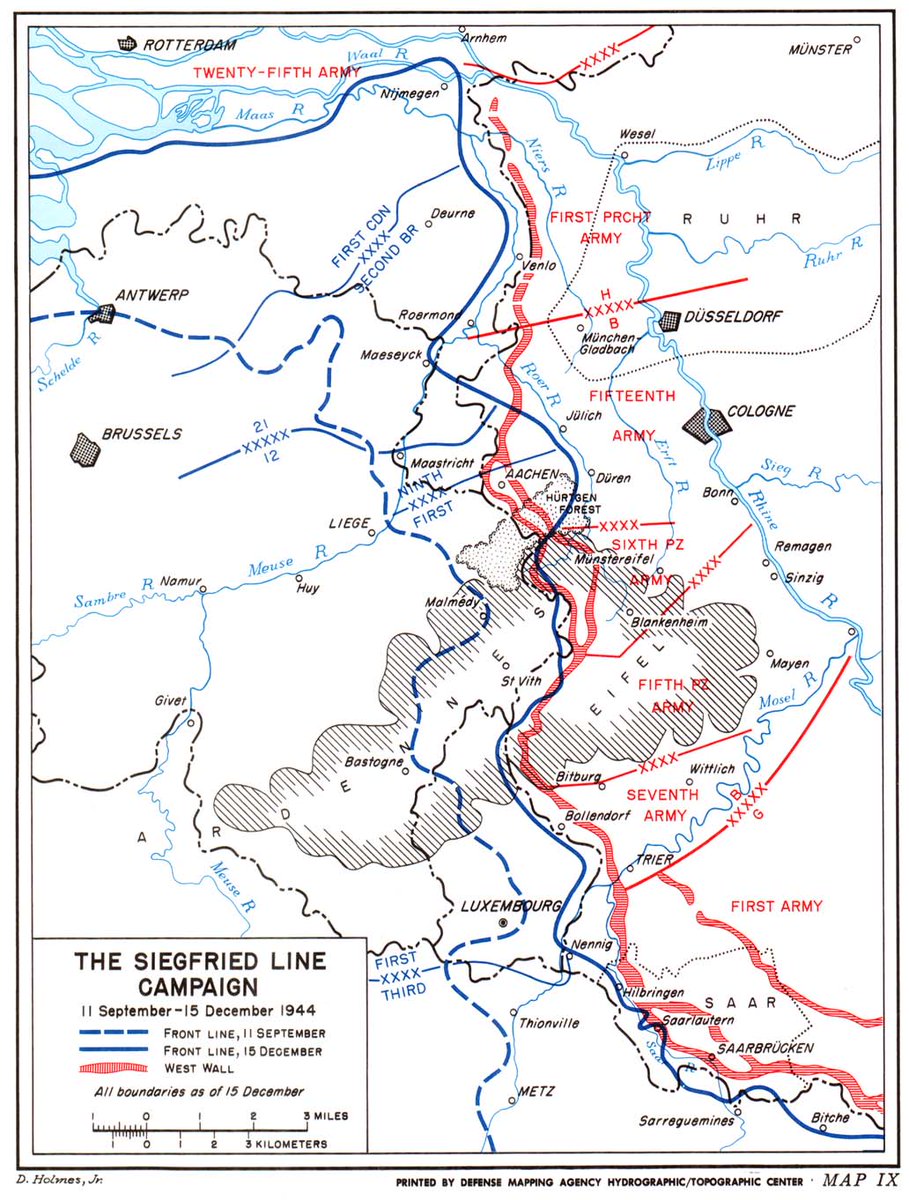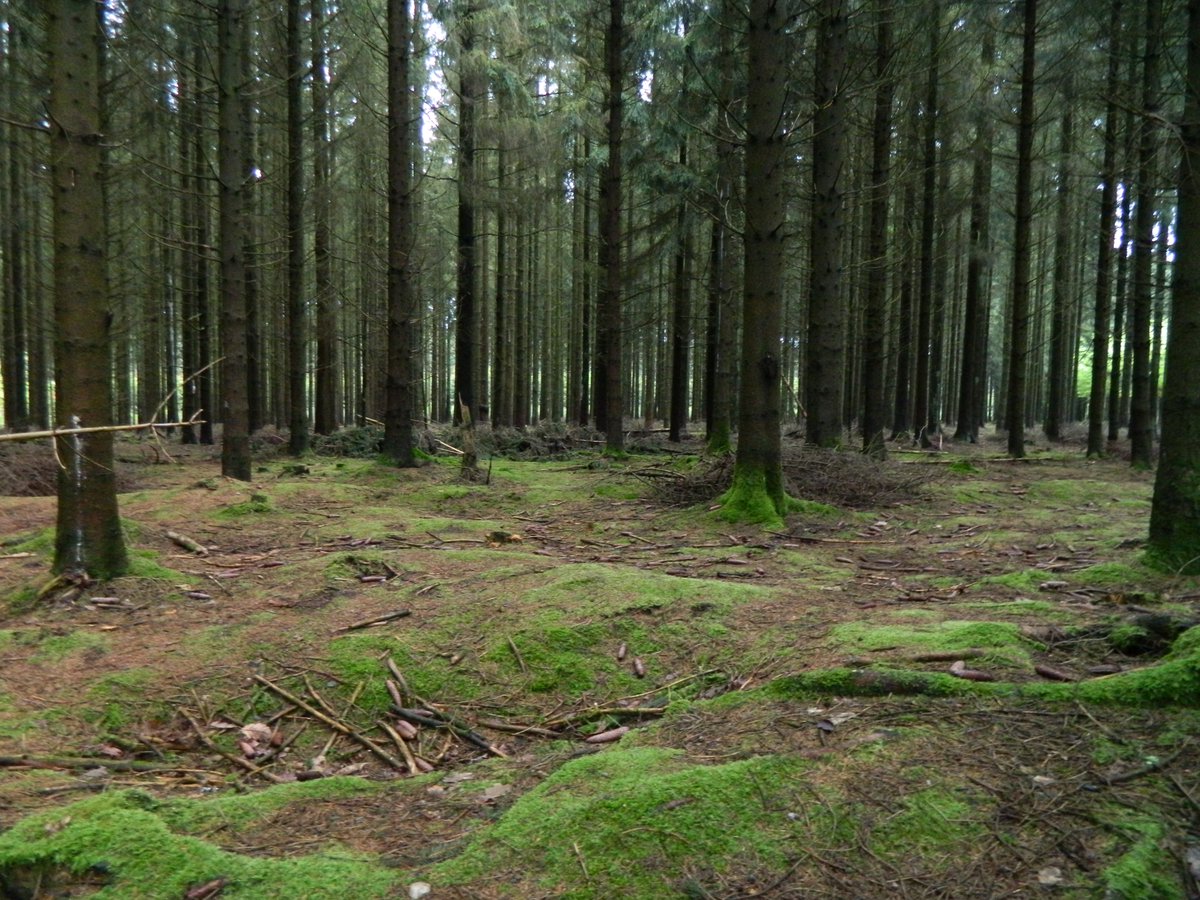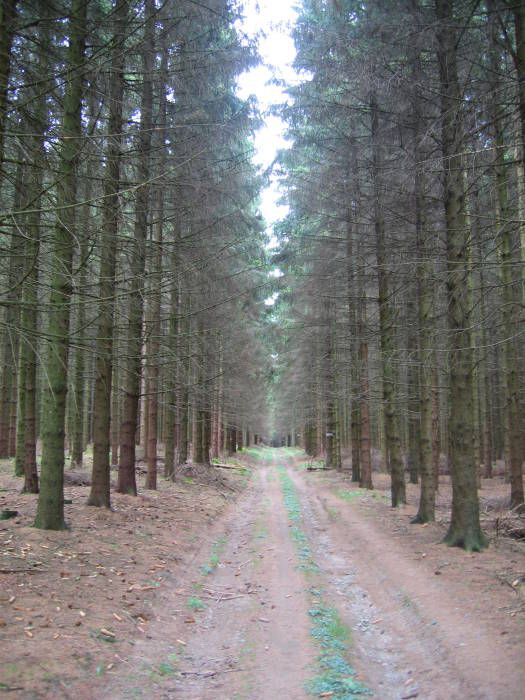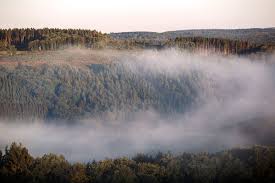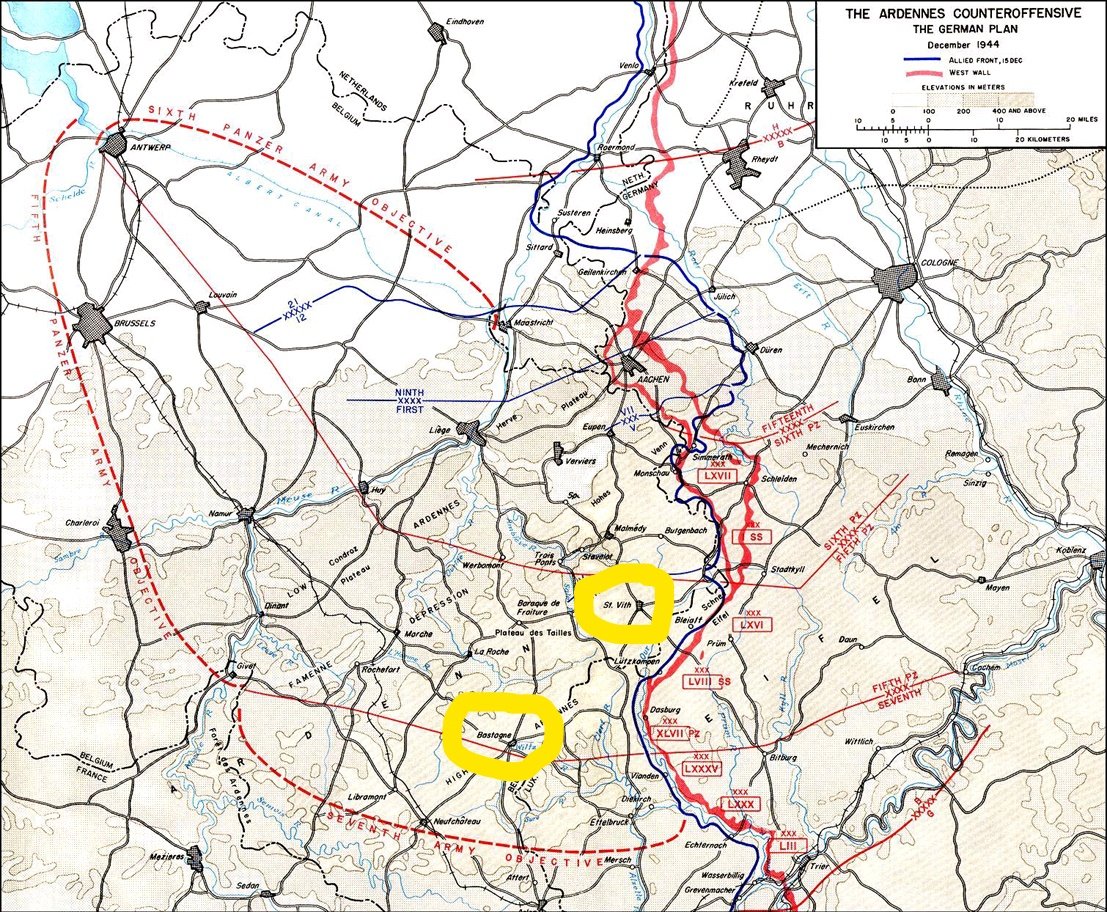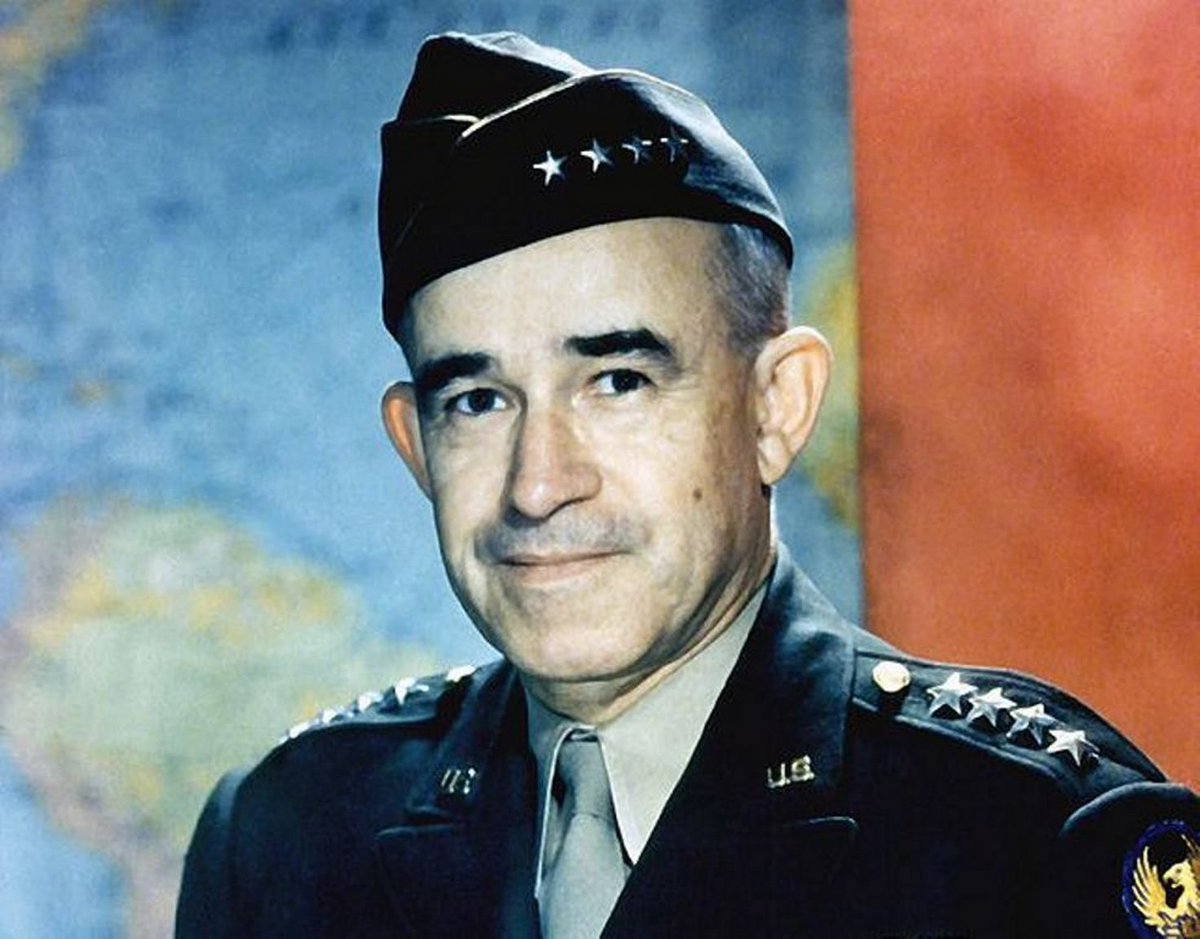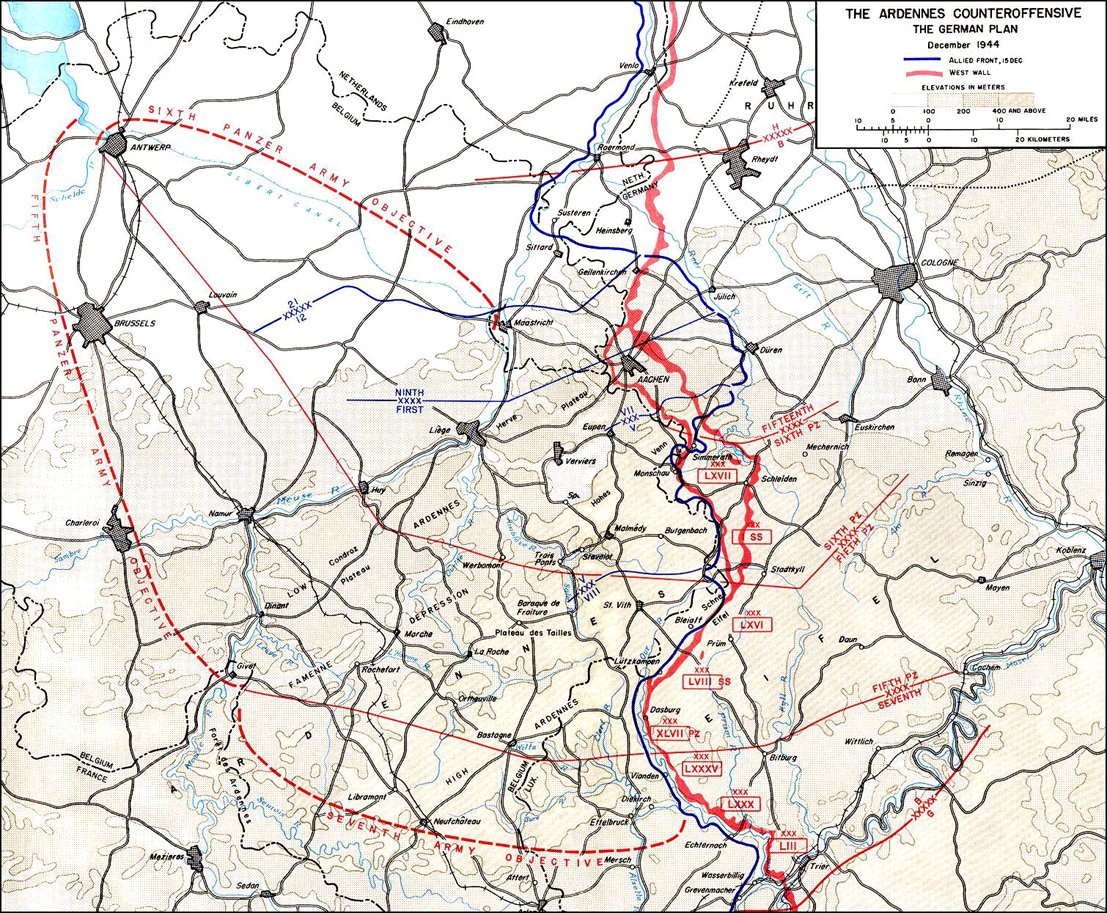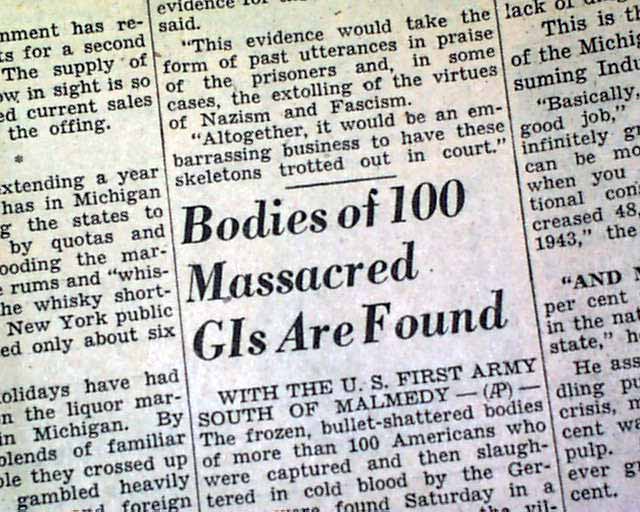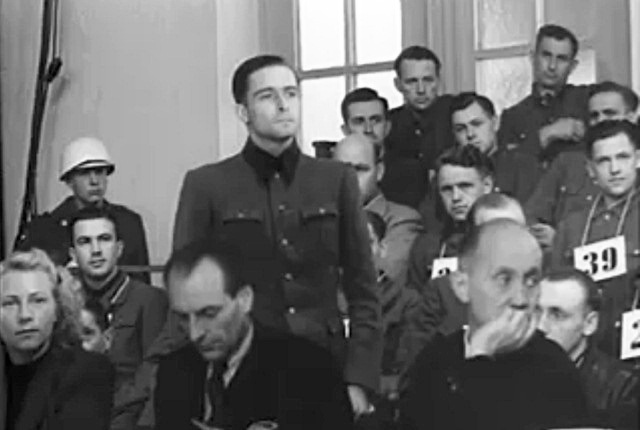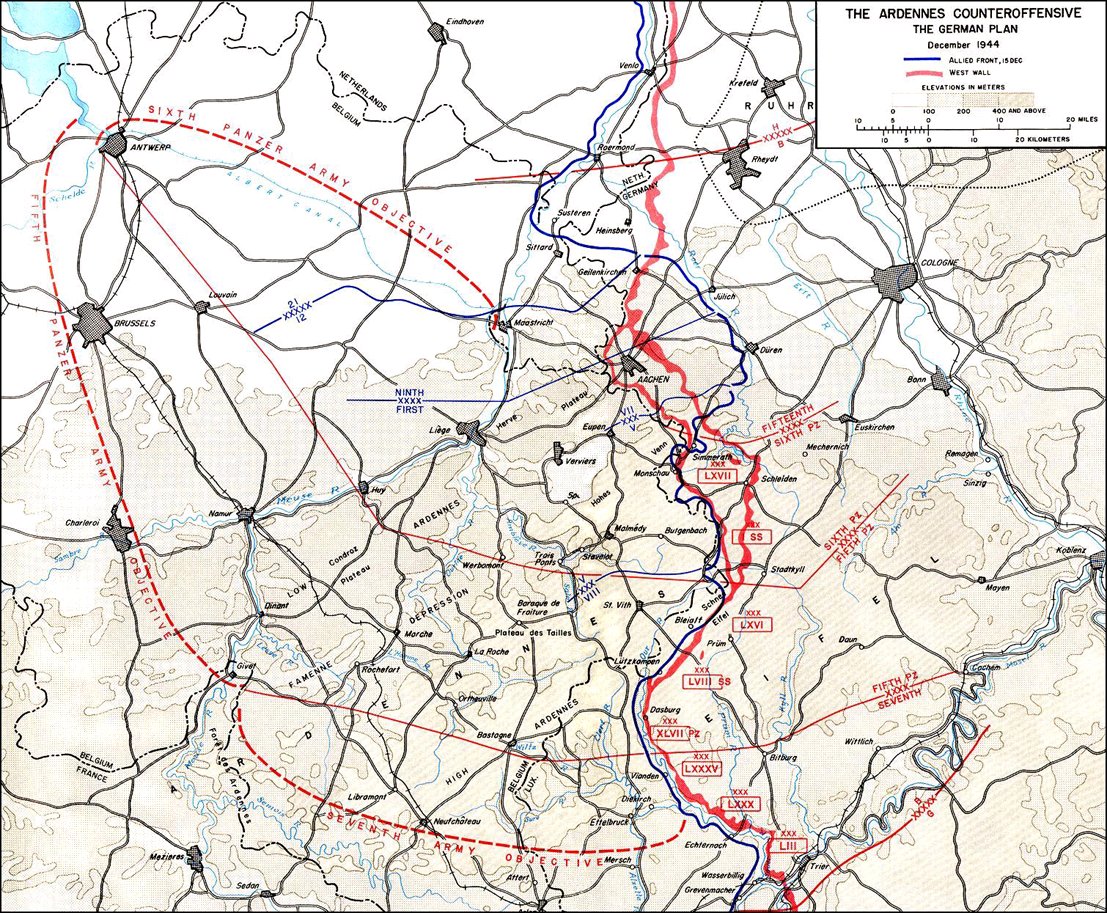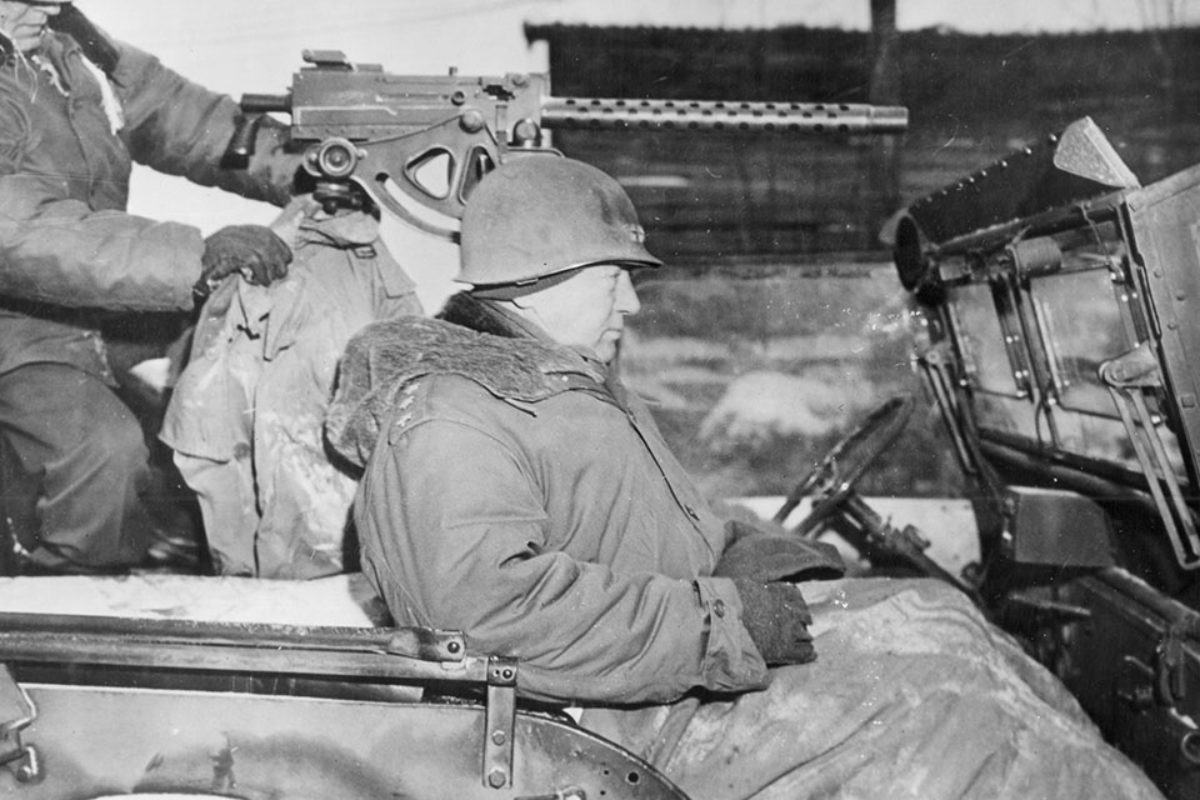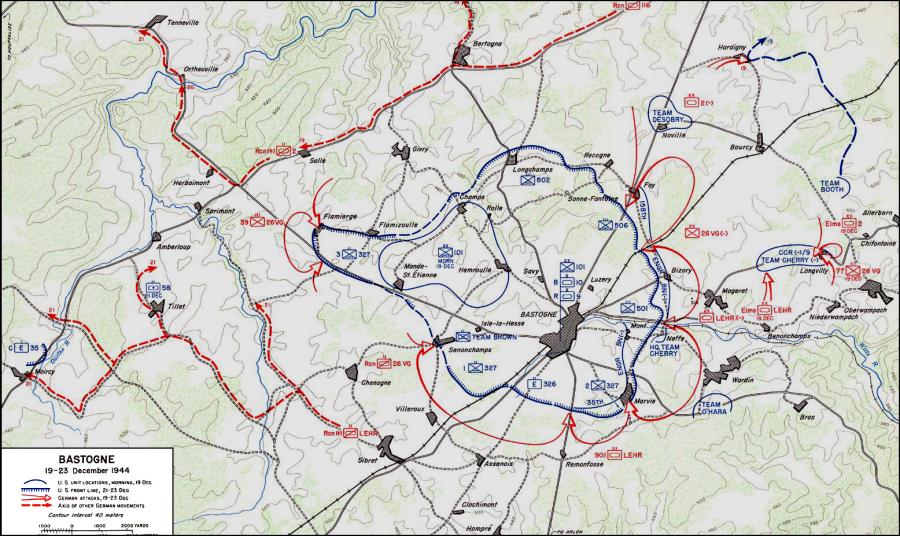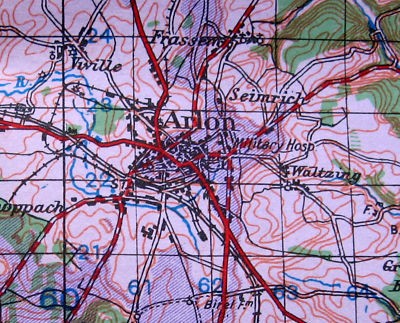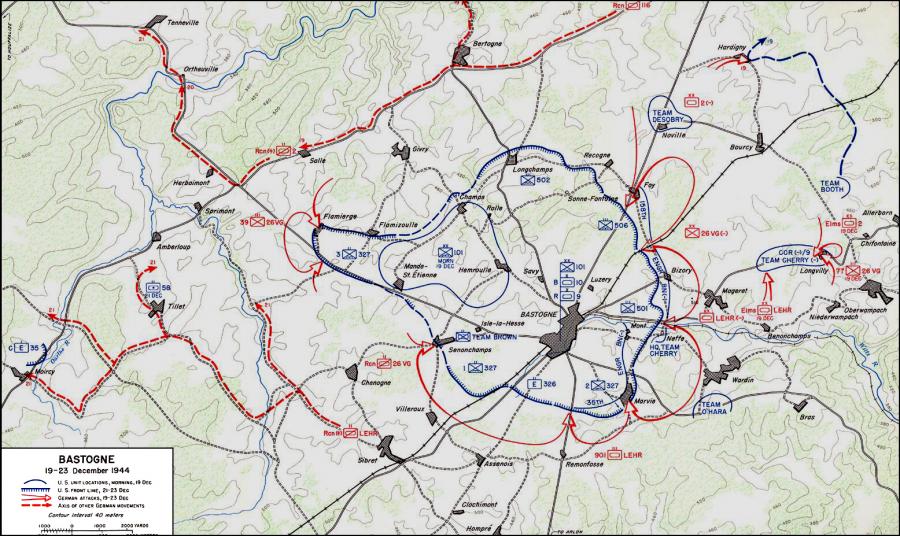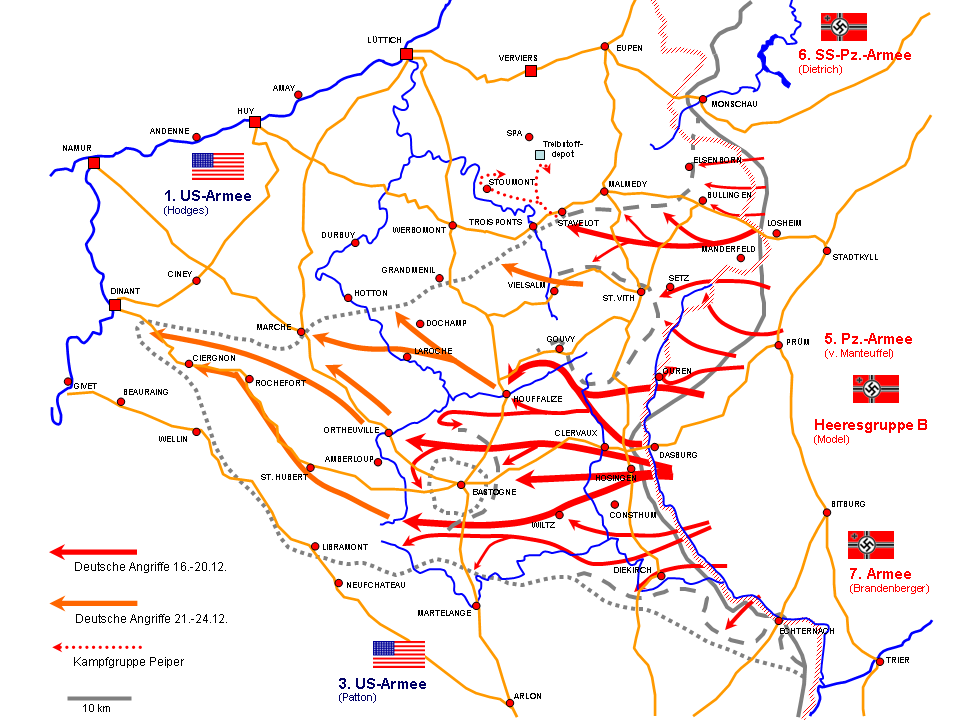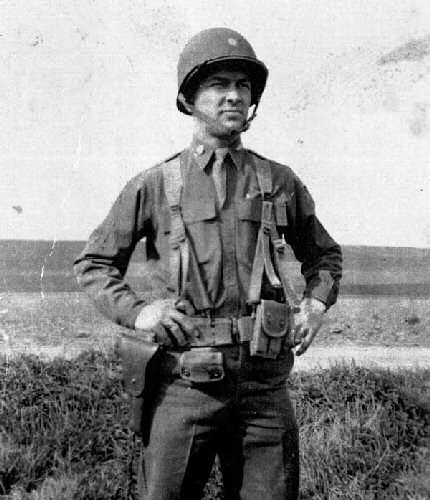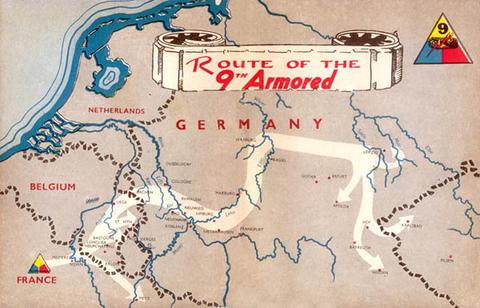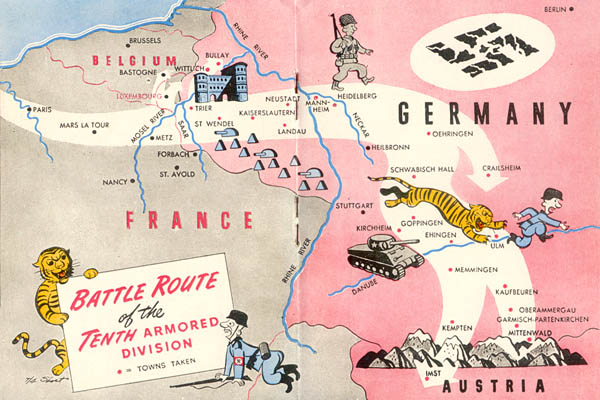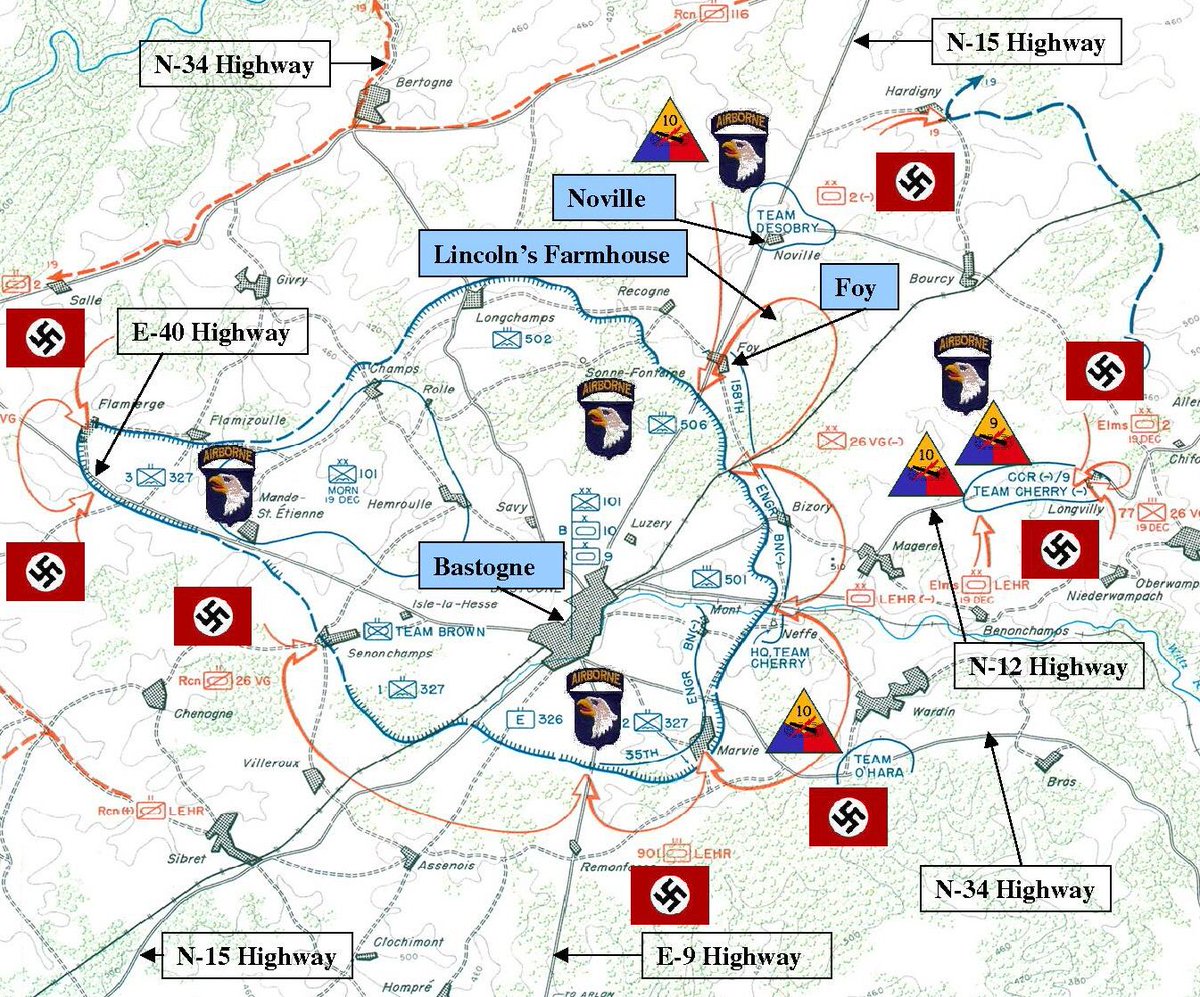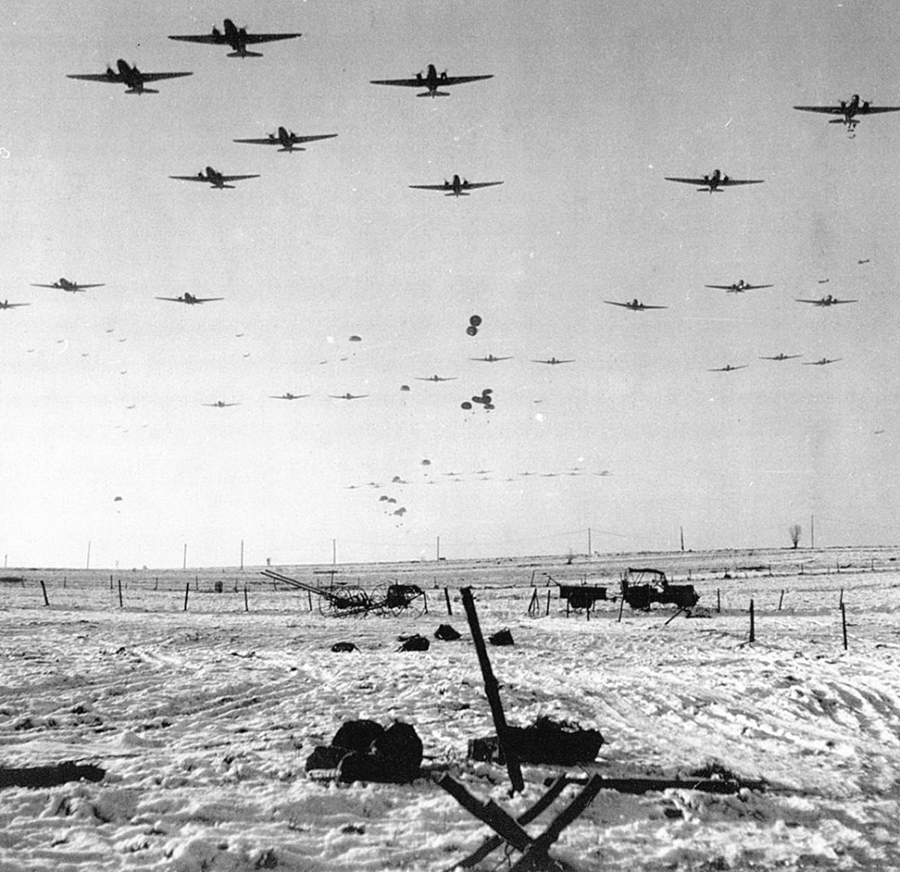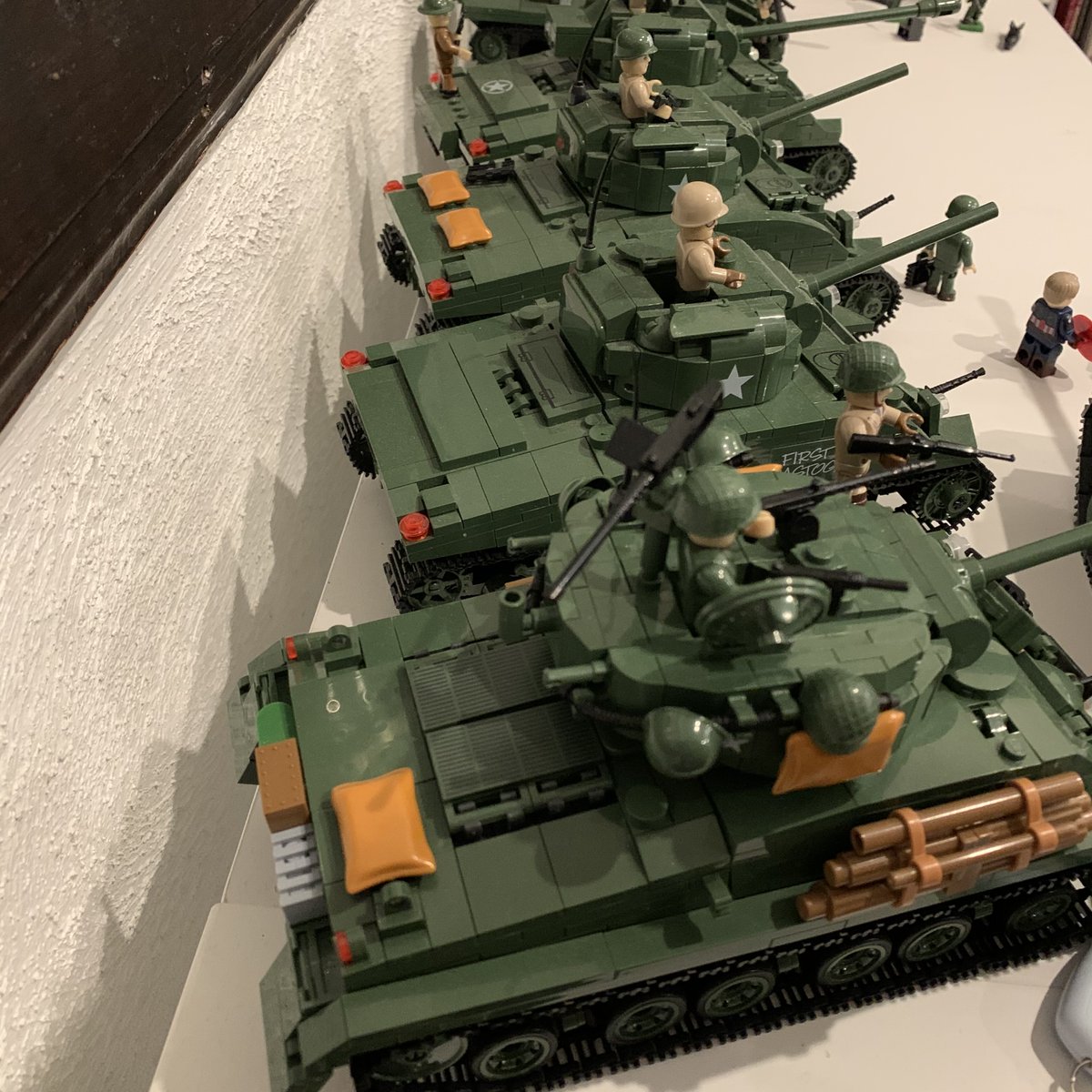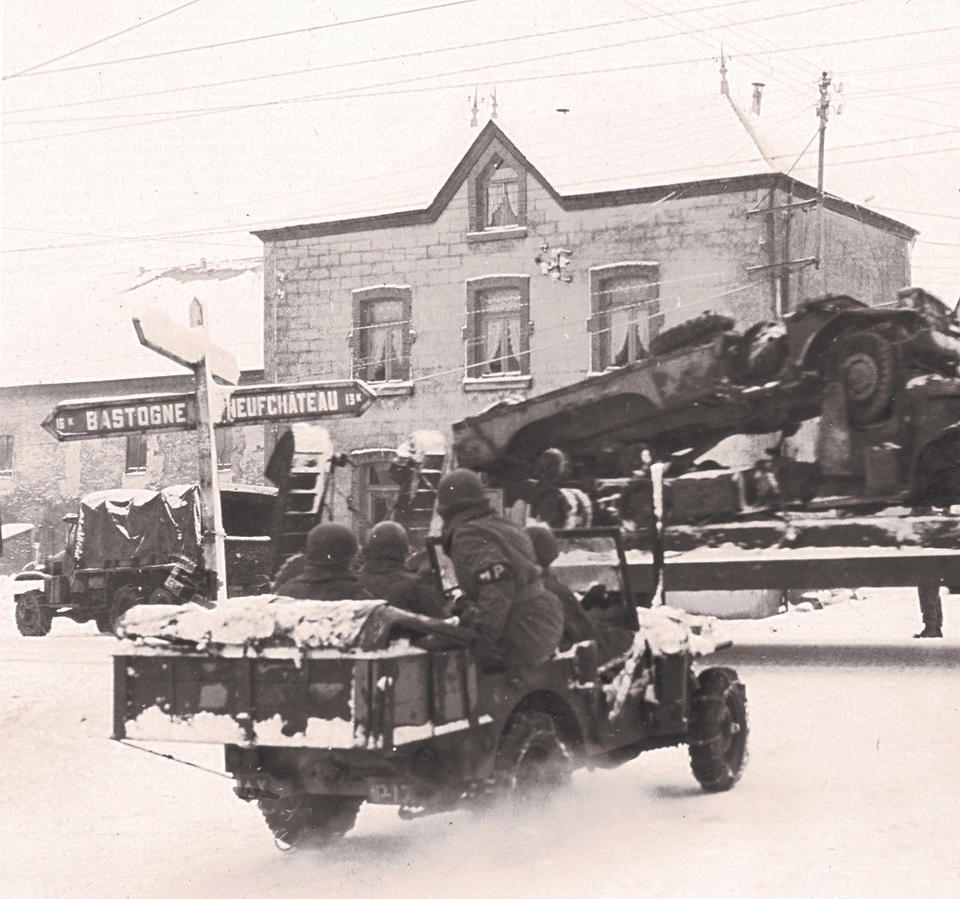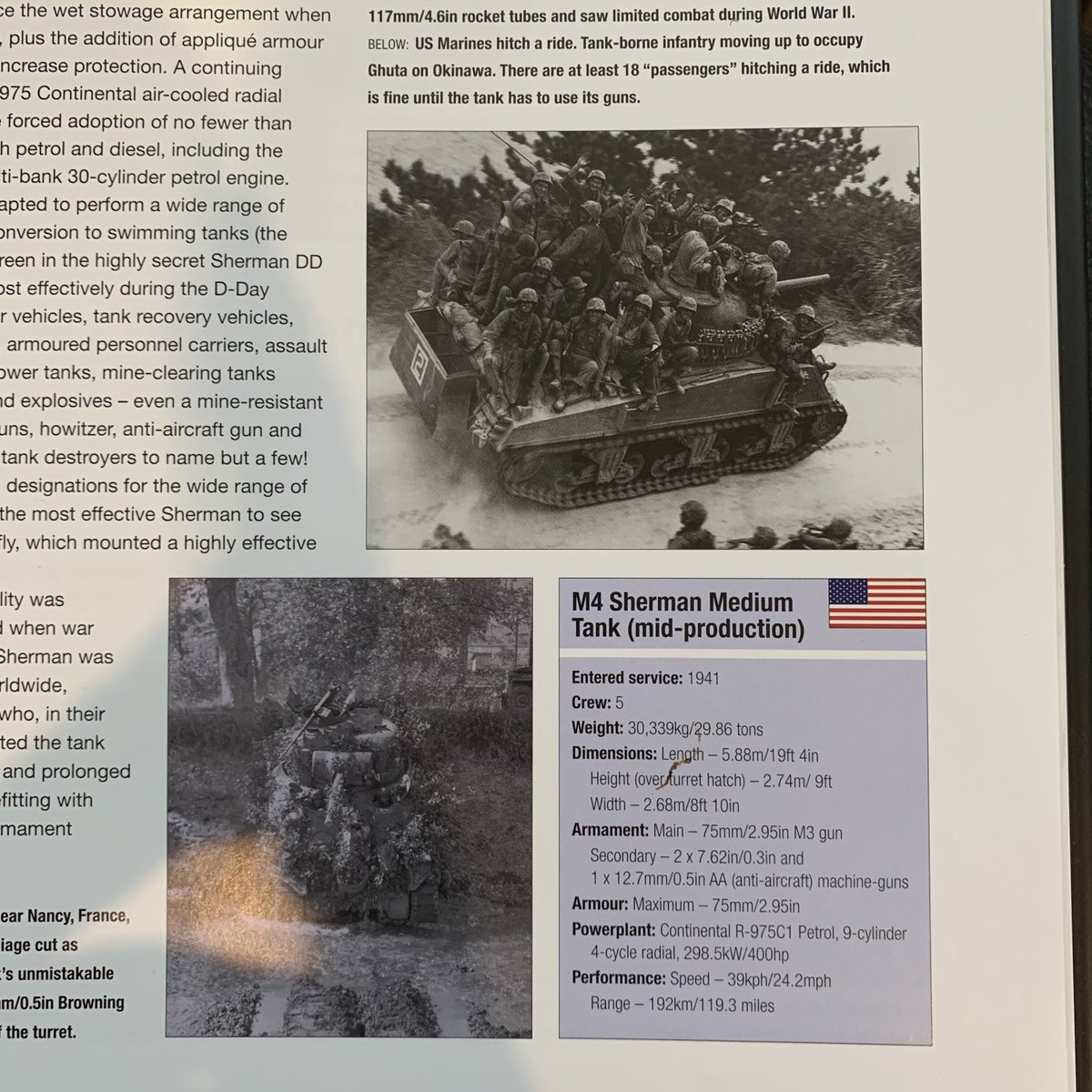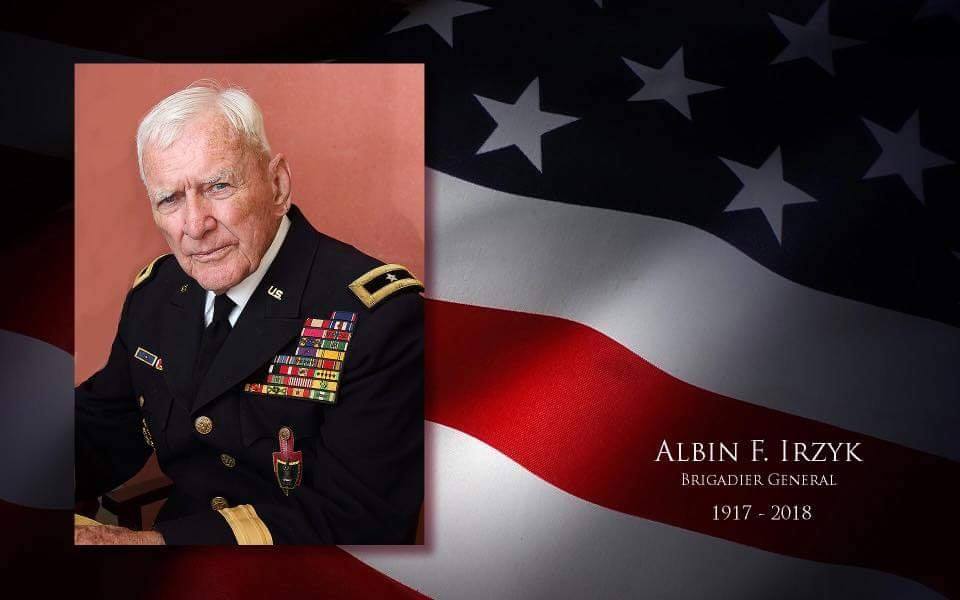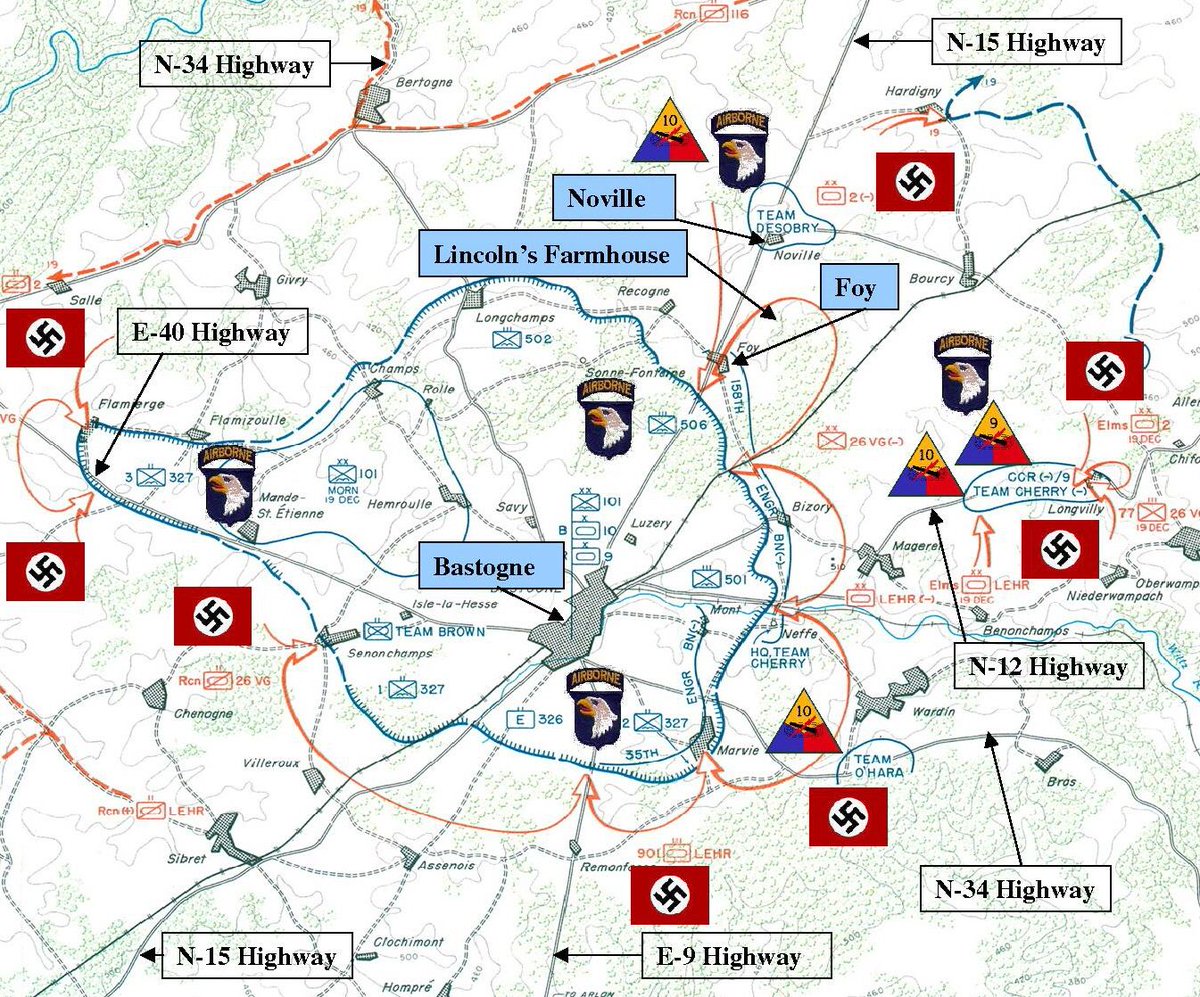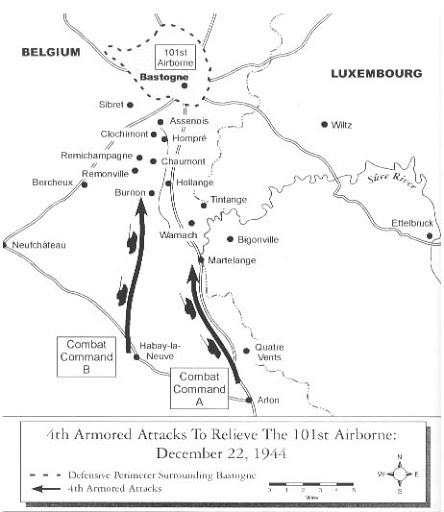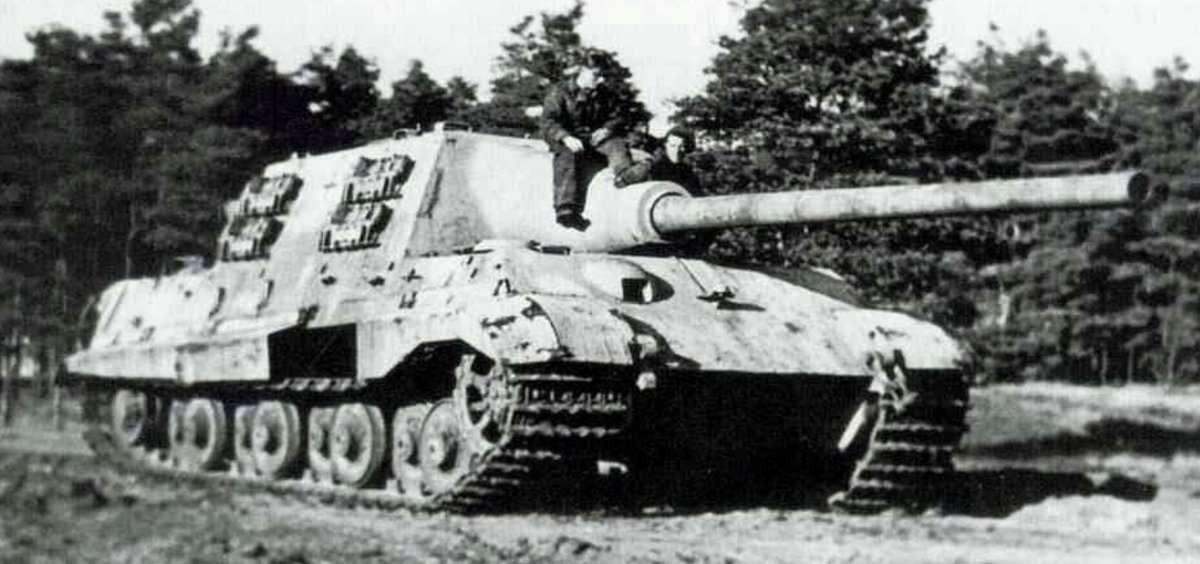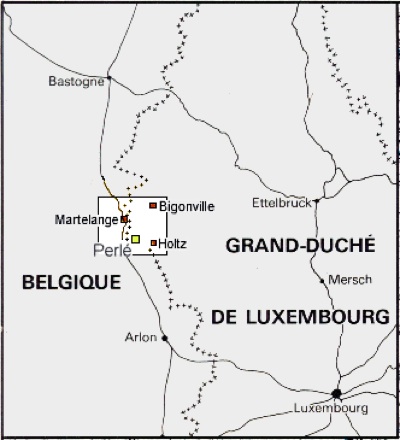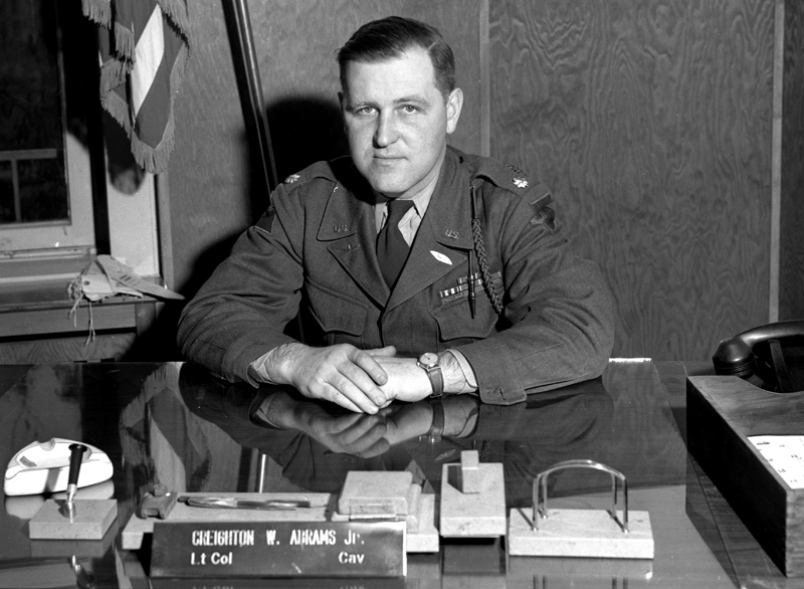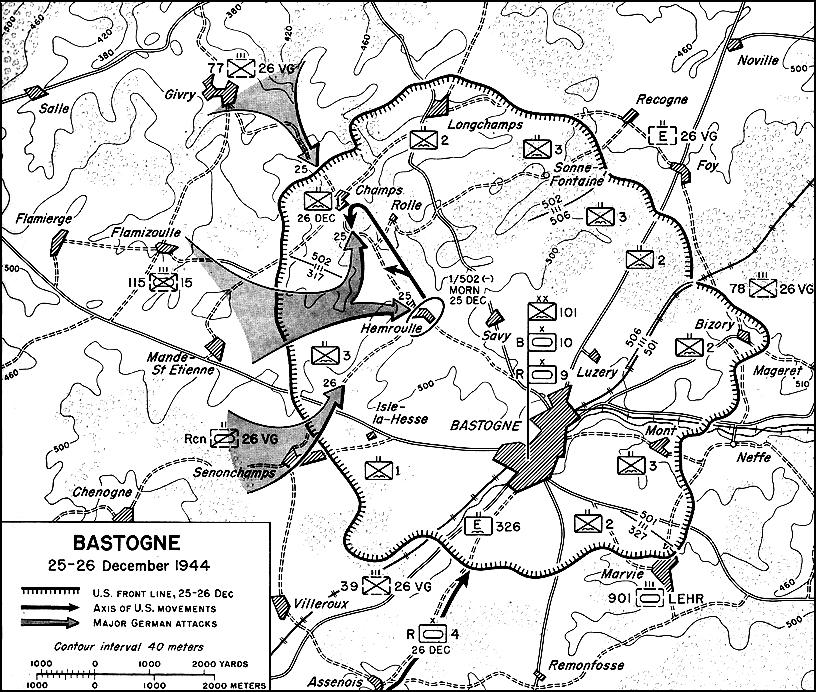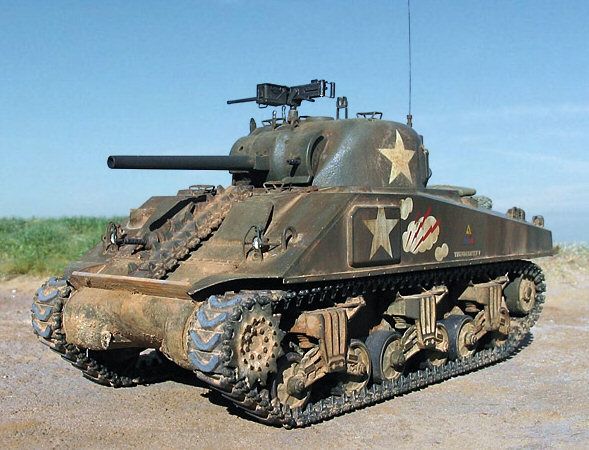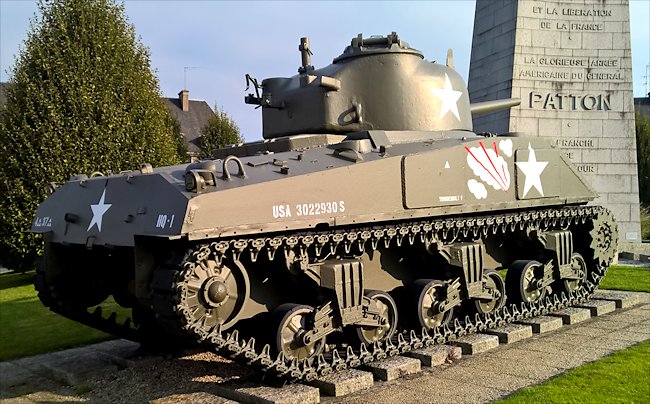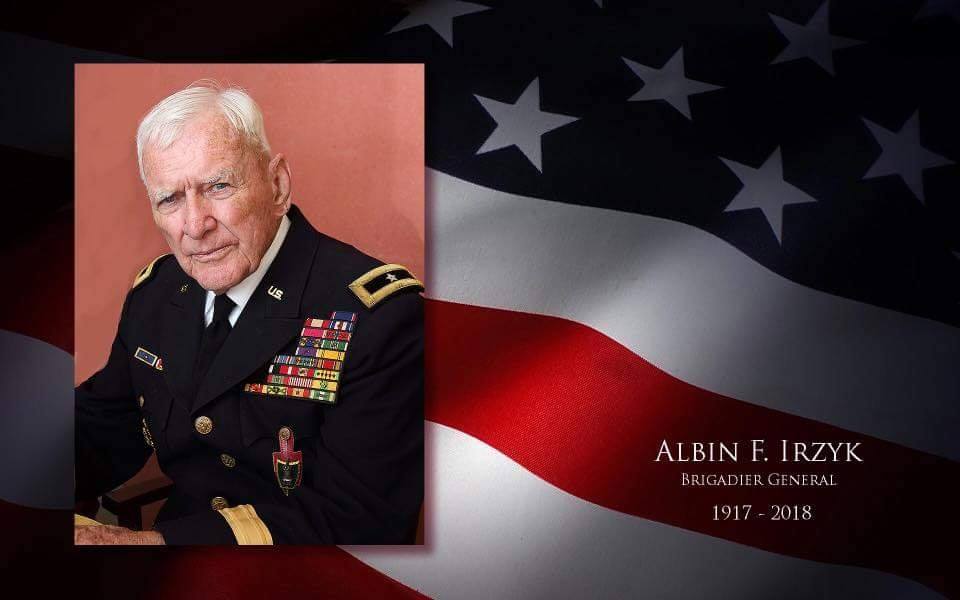My friends over at @18airbornecorps have been doing a great job sharing stories and history of the Battle of the Bulge. But I promised months ago that I would do a thread on the story of when Tanks saved the Jumpy Bois so...
This guy here is Albin Irzyk, who commanded the 8th Tank Battalion of 4th Armored Division at the time. Irzyk would lead the Third Army elements sent to relieve Bastogne and provide “motivation” for the Germans to back TF up.
Irzyk commissioned into the Cavalry in 1940, which used to be its own Branch but we’ll talk about that in a few weeks 
He was from Massachusetts, like yours truly.

He was from Massachusetts, like yours truly.
As a Second Lieutenant with 3rd U.S. Cavalry Regiment, which was still a Horse Regiment in 1940, Irzyk served under a Colonel George S. Patton Jr, who would later serve as his Commanding General in Third Army in WWII.
In January 1944, 4th Armored Division arrived in Europe and trained in England until D-Day. They weren’t part of the initial landing forces, but instead arrived in France the following month (July 1944).
Assigned to Patton’s Third Army, 4th Armored Division headed across France toward Germany, and in the process met with significant German resistance. The 8th Tank Battalion led the way. @DonMFox
The 8th Tank Battalion participated in the Battle of Arracourt, 18 to 29 September, and together with the 37th Tank Battalion fought off German attacks utilizing the Panzer V or Panther tank.
Irzyk took command of the 8th Tank Battalion in December 1944.
Irzyk took command of the 8th Tank Battalion in December 1944.
So for about a month (9 Nov to 8 Dec), the US Army’s 4th Armored Division, was continuously engaged in the Allied Fall offensive and as a consequence of this, the division was roughly half strength (both tanks and infantry) at the time of the German attack on 16 December.
They were, however, quite famous for their accomplishments, earning them the nickname “Patton’s Juggernaut” and benefited from exceptionally high esprit de corps.
Before the Germans attacked in December, Patton had been planning a breakthrough of the Siegfried Line for 18 December 1944 and had tasked 4th Armored Division with exploiting that breakthrough and advancing on the Rhine River to Mannheim.
This plan was scrapped when the Germans attacked on 16 December, launching what would become known as the “Ardennes Offensive” of the Battle of the Bulge.
The Ardennes offers some difficult terrain to navigate, especially with armored vehicles. There are numerous rivers that cut across the region, hills and ravines and dense forested areas. It's maybe ideal for defense, but a challenge for offense.
There are two key travel centers in the Ardennes: one at St. Vith and one at Bastogne. Most people think of Bastogne when they consider the Battle of the Bulge, but it was actually St. Vith that held significantly greater importance. But we’ll talk about Bastogne for now.
Germans believed they could split the Allies, halt the Allied advance westward, take bridges over the Meuse, take the port at Antwerp, take St. Vith & Bastogne, and use all of this to force the Allies to negotiate so that would just leave the Russians left for them to handle.
Since the D-Day landings, the Allies had been hardcharging eastward toward Germany and relentlessly beating down the Germans at nearly every turn.
The fighting was almost constant for the 6 months between the Normandy invasion and the beginning of December, and the Allies had advanced so far and so quickly that they were starting to face supply issues.
The Ardennes was a good spot to take a break. With the terrain full of rivers, dense forest, hills, and narrow roads it was more easily defended than attacked.
Omar Bradley took a calculated risk in relaxing defenses along the front through the eastern Ardennes, utilizing two newly arrived infantry divisions with no combat experience and two exhausted divisions that needed to rest and take on replacements.
The German attack on 16 December 1944 took the Allies by surprise. It can be argued that maybe it shouldn’t have surprised them, but that’s a discussion for another time.
I will point out, however – in the movie Patton, there’s a scene where he says something to the effect of – there is nothing to indicate that the Germans are planning a massive counteroffensive. Therefore, that is exactly what they are likely doing.
The Germans attacked with 8 divisions – more than 1700 tanks, over 200,000 infantry – they overpowered the U.S. VIII Corps, which had been positioned along a front of about 85 miles in length, extending the border between Luxembourg, Belgium, and Germany.
The Sixth Panzer Army, spearheaded by Kampfgruppe Peiper, went around to the north, while the Fifth Panzer Army darted straight through the center, aiming to take St. Vith on its way to capture bridges over the Meuse and ultimately capture Antwerp. (This is mostly just a recap.)
The Seventh Army went around to the south and was to set up a sort of defensive shield to protect the Fifth Panzer Army from counterattack.
Patton was instructed to send the 10th Armored Division north to reinforce VIII Corps. I talked about that the other day. https://twitter.com/Mother_of_Tanks/status/1341891952934051841
Patton also readied 3 divisions to be sent north, and it was this foresight that likely got them there just in time.
Patton had said, “while we were all accustomed to rapid movement, we would now have to prove that we could operate even faster. We then made a rough plan of operation.”
He worked with his staff to prepare three possible routes they could take and established code words for each so that he would simply have to provide a single word by phone to get things moving once the authorization was given.
All of this was done in about an hour before he met with senior leaders.
Eisenhower wanted Patton to command this counterattack, and with at least 6 divisions. When he asked Patton how soon could he start, Patton replied, “As soon as you’re through with me.”
Eisenhower wanted to know when the soonest they could attack would be, and Patton said he had 3 divisions ready to attack on the 21st of December. They thought he was joking. Eisenhower said the 22nd or 23rd seemed more feasible.
The amount of effort that Patton put in the next few days is in no small way remarkable. While waiting for the process of relocating a Command Post, Patton and his driver, Master Sergeant John Mims, sped between division and corps locations serving as a mobile 2-man command post.
On 20 December alone, Patton visited 7 divisions and regrouped an army, while also issuing orders, engaging in typical small talk and jokes with soldiers, reorganizing people and positions, and ensuring everyone was moving toward Bastogne.
Mims is quoted as saying that day, “General, the government is wasting a lot of money hiring a whole General Staff. You and me has run the Third Army all day and done a better job than they do.”
He probably wasn’t wrong – but these were unique circumstances.
He probably wasn’t wrong – but these were unique circumstances.
Patton wrote in his diary 
 that until 20 December 1944, he had actually considered the possibility of just letting the 5th Panzer Army have Bastogne but by the 20th he knew this was a bad idea.
that until 20 December 1944, he had actually considered the possibility of just letting the 5th Panzer Army have Bastogne but by the 20th he knew this was a bad idea.

 that until 20 December 1944, he had actually considered the possibility of just letting the 5th Panzer Army have Bastogne but by the 20th he knew this was a bad idea.
that until 20 December 1944, he had actually considered the possibility of just letting the 5th Panzer Army have Bastogne but by the 20th he knew this was a bad idea.
He said to General Middleton, “of all the goddamn crazy things I ever heard of, leaving the 101st Airborne to be surrounded in Bastogne is the worst!” https://www.loc.gov/collections/george-s-patton-diaries/about-this-collection/
The Germans had encircled Bastogne the night of the 20th of December, severing the communication lines and effectively isolating the 101st. Hindsight gives us some benefit – there were maybe 8000 soldiers from the German 5th Paratroop Division holding the line south of Bastogne.
The rest of 4th AD assembled near Arlon on the 20th of December. Friendly troops from the 28th Infantry Division, 9th Armored Division, Corps Artillery, Engineer units, etc. stumbled into the 4th AD assembly area – exhausted, hungry, and cold.
On 21 December, with the @101stAASLTDIV surrounded in Bastogne, the decision to wait was tossed out the window. Third Army would attack.
Around 0400 on 22 December, Third Army moved out during a snowstorm, with tanks and infantry driving north. Three divisions from Third Army set out on 22 December. The 4th Armored Division spearheaded the force advancing to Bastogne but hit some trouble.
Albin Irzyk, at the time commander of 8th Tank Battalion, noted they headed out a little after midnight on the 20th with 160 miles to travel before they would reach Bastogne.
Near Bastogne, Patton’s 9th Armored Division and 10th Armored Division had elements that were by now also surrounded by Germans.
The weather was clear on 23 December, allowing the opportunity for 200 or so supply drops at Bastogne.
Irzyk’s Battalion spearheaded the initial 3 divisions. They had about 127 tanks with them and no real idea what they were heading into. They drove all night and all day, in snow and ice and terrible weather.
On the last night, they had to travel in total blackout conditions. Irzyk’s tank was first, so he didn’t’ have the benefit of the rear-facing cat’s eyes on a tank in front of him to judge speed, direction, and distance between tanks.
They came to a sign that read Neufchateau and Bastogne. The 8th Tank Battalion had about 32 tanks, and they reached the outskirts of Bastogne, having traveled over 160 miles in less than 24 hours.
For reference, the Sherman tank could reach almost 25mph under absolute ideal conditions – think: wide, smooth roads free of mud and ice, clear weather, and no one shooting at them. This was very rarely if ever the case. To cover that distance in a day was really impressive.
Irzyk said, “That was a tough, tough march. It was the greatest mass movement of men in the shortest period of time in military history. But every tank made it.”
At least to that point.
(Spoiler: He survived, made it to Brigadier General, and lived to 101 years old.)
At least to that point.
(Spoiler: He survived, made it to Brigadier General, and lived to 101 years old.)
The Germans had Bastogne surrounded. American forces were trapped in the city. They had gone over 40 miles into Belgium within a handful of days, but now the terrain was proving a challenge and they had to pick and choose priorities.
Tanks can maneuver relatively well in open fields, not so much on narrow roads and dense forests. They were running low on fuel, the narrow roads were becoming clogged with Panzers. The Germans needed to make a decision and chose to focus on Bastogne.
The lead 4th Armored Division elements, led by Irzyk, hit some trouble. At Chaumont, they were fired upon and decided the clear the town. They organized a classic textbook style pincer.
Halfway into it, 5 tanks on their left got stuck in mud – the ground was supposed to be frozen, but apparently the ground didn’t get the memo.
The central group headed straight into the town, they were led by Irzyk, right into an ambush where they faced a platoon of Jagdtigers. These self-propelled guns are heavier than the modern Abrams tanks and could knock out a Sherman from 2 miles away.
4AD lost 18 tanks along with most of their crews in the battle of Chaumont and their advance to Bastogne was slowed significantly.
About 8 miles away, near Bigonville, was the Combat Command Reserve (CCR), which was to take Bigonville then defend the flank of the Third Army units moving to Bastogne. Instead, Patton redirects them to Bastogne and they spent Christmas Day moving west.
FINALLY – On 26 December 1944, the Combat Command Reserve of 4th Armored Division was assembled and ready to make the most daring armored charge in the history of armored warfare.
Bastogne had been under siege for 5 days, surrounded by German forces, Americans trapped inside – cut off from communicating with the rest of the Allies. Running out of supplies and ammunition.
Facing intense German resistance right up to the edge of Bastogne, the men of 4th Armored Division manage to break through and reach the city.
A Lieutenant Colonel Creighton Abrams, now down to about 20 tanks, got permission to move ahead to Bastogne anyway. You may have heard of him 

Abrams and his tanks made their way through Assenois, a few minutes from Bastogne. And around 5pm on 26 December, a Lieutenant Boggess, with the first few tanks in that group, was shaking hands with a member of the @101stAASLTDIV .
Incidentally, Abrams' tank looked like this. I'm not 100% sure this is the actual tank or one painted to look like his, but there is a tank in Avranches, France with these markings. …http://tank-photographs.s3-website-eu-west-1.amazonaws.com/avramches-m4a4t-sherman.html
The cost was high. In 10 days of fighting, the 4th Armored Division lost 28 tanks and over 1000 men who were wounded or killed.
But the benefit cannot be overstated. Irzyk, who eventually became a General and lived to 101 years old, often spoke of Patton’s relief of Bastogne being a major turning point in the Battle of the Bulge, and the Battle of the Bulge was a major turning point in WWII.
The weather cleared up after Bastogne was in Allied hands, and for the next 3 weeks Allied tanks and air support forced the Germans out of the Ardennes and back to where they had been prior to their attack.
American casualties by the end of the Battle of the Bulge would number around 75,000. And we would lose over 320 tanks.
By the end of the Battle of the Bulge, as many as 100,000 Germans would be killed, captured, and/or wounded. They would lose over 500 Panzers, which by now were irreplaceable, and this would cost them the war – they would never again launch an attack.
Anyway, so this is when the Tanks saved the Jumpy Bois. And if you've seen Band of Brothers, you may recall after the 101st is saved, Joe Toye says something to the effect of, "We didn't need to be fucking rescued by Patton!" So maybe there's room for debate 

Bastogne: The First Eight Days by S. L. A. Marshall https://history.army.mil/html/books/022/22-2-1/CMH_Pub_22-2-1.pdf
The Ardennes: Battle of the Bulge by Hugh M. Cole https://history.army.mil/html/books/007/7-8-1/CMH_Pub_7-8-1.pdf
The 4th Armored Division in the Relief of Bastogne by LTC Delk M. Oden
Patton's Staff and the Battle of the Bulge by LRC Paul G. Munch
Patton's Unsung Armor of the Ardennes: The Tenth Armored Division's Secret Dash to Bastogne by Eugene Patterson
Patton's Staff and the Battle of the Bulge by LRC Paul G. Munch
Patton's Unsung Armor of the Ardennes: The Tenth Armored Division's Secret Dash to Bastogne by Eugene Patterson
~Fin~

 Read on Twitter
Read on Twitter
